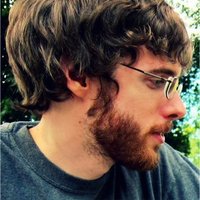
T. S. Miller
Related Authors
Joseph Taylor
University of Alabama in Huntsville
Hiroki Okamoto
Ritsumeikan University
Holly Crocker
University of South Carolina
Michael Drout
Wheaton College, MA
Thomas Honegger
Friedrich-Schiller-Universität Jena
Andrew Higgins
Imperial War Museum
Tom Shippey
Saint Louis University
Susan Morrison
Texas State University
George L Scheper
Johns Hopkins University
InterestsView All (41)
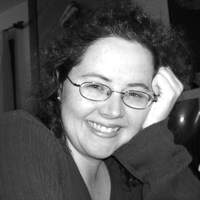
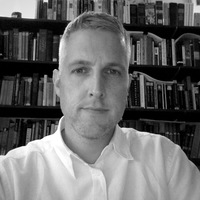
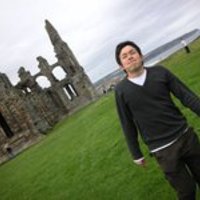
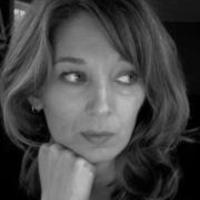
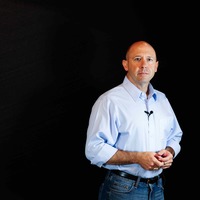

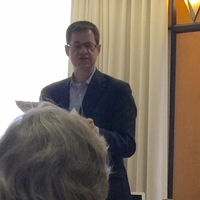
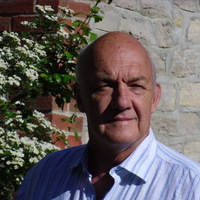
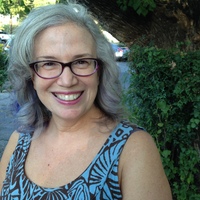
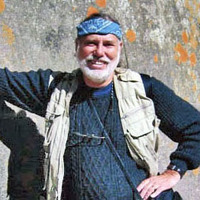
Uploads
Papers by T. S. Miller
We also find in the poem moments of more perspectival description linking these catalogues, as in the House of Fame itself, in which the narrator at first perceives only a formless crowd of heralds impossible to describe due to both their number and the semiotic complexity of their garments. After relegating their regalia to a short catalogue, the narrator can then move past the press and look up to observe a rising dais with the goddess Fame enthroned on it. Only after spatially locating arbitrary Fame as the principle governing the crowd in the room does the narrator notice and describe the pillar-lined corridor leading down to the hall’s wide doors. Since, upon closer examination, these pillars are seen to bear up the fame of ancient authors, they generate further descriptive catalogues. Throughout the poem we find this same sort of telescoping between the purposively cluttered catalogue and more perspectival articulations of space, presenting a challenge to spatial theories of narrative that would dismiss pre-modern narrative as crudely and/or flatly a-perspectival. Indeed, we will be unable to describe medieval literature as uninterested in perspective when we finally compare the navigation of space in House of Fame to the medieval and classical technique of the “memory palace,” in which memories are recalled based on their precise spatial relationships inside a mentally constructed building: Chaucer’s poem is at once such an edifice of memory and a challenge to the practice."
from the plot: we see a being truly abandoned by its maker, yet one whose capacities for self-determination and regenerative “self-creation” win out over alienation.
We also find in the poem moments of more perspectival description linking these catalogues, as in the House of Fame itself, in which the narrator at first perceives only a formless crowd of heralds impossible to describe due to both their number and the semiotic complexity of their garments. After relegating their regalia to a short catalogue, the narrator can then move past the press and look up to observe a rising dais with the goddess Fame enthroned on it. Only after spatially locating arbitrary Fame as the principle governing the crowd in the room does the narrator notice and describe the pillar-lined corridor leading down to the hall’s wide doors. Since, upon closer examination, these pillars are seen to bear up the fame of ancient authors, they generate further descriptive catalogues. Throughout the poem we find this same sort of telescoping between the purposively cluttered catalogue and more perspectival articulations of space, presenting a challenge to spatial theories of narrative that would dismiss pre-modern narrative as crudely and/or flatly a-perspectival. Indeed, we will be unable to describe medieval literature as uninterested in perspective when we finally compare the navigation of space in House of Fame to the medieval and classical technique of the “memory palace,” in which memories are recalled based on their precise spatial relationships inside a mentally constructed building: Chaucer’s poem is at once such an edifice of memory and a challenge to the practice."
from the plot: we see a being truly abandoned by its maker, yet one whose capacities for self-determination and regenerative “self-creation” win out over alienation.
Science fiction studies boasts a long tradition of engaging with and contributing to contemporary literary theory. Fantasy studies, by contrast, has seen comparative neglect within the same range of theoretical approaches, despite the potentially broader remit of the fantastic itself. This course will introduce you to some of the major works of fantasy theory from the second half of the 20th century and the early 21st, as we interrogate this history of neglect and begin to pursue our own theorizations of the fantastic. Is fantasy really “under-theorized”? Do certain bodies of critical theory work with fantasy particularly well, or especially reward expansion of their own traditional scope to include more fantastic texts? What can fantasy studies learn from theory, and theory learn from fantasy studies? Fantasy novelists to be considered include Ursula K. Le Guin, J.R.R. Tolkien, Octavia Butler, China Miéville, and Nnedi Okorafor. We will also be reading the two most influential monographs theorizing genre fantasy itself, but, additionally, each student will deliver a class presentation on a chosen school or area of critical theory -- or perhaps major theorist -- that will speculate on some potential applications to fantasy studies.
In contrast to popular depictions of the Middle Ages as an era of drab and dull suffering, games and other forms of play flourished across Western Europe. Contemporary games such as chess, backgammon, and playing cards began to develop into their modern forms during the Middle Ages, and the upper classes enjoyed numerous leisure activities including hunting, hawking, jousting, and more. In this course, we will study the place of games and gaming in medieval culture, but with particular emphasis on the intersection of those games with Middle English literature. Evidence exists of the oral performance of medieval literary texts alongside other types of entertainments, and the distinction between "game" and "literature" can sometimes become blurred in, for example, the audience-driven "demaunde d'amor" poem; formal contests of poetic composition; and ritualized insult exchanges -- these last the medieval analogue of the rap battle. Our primary readings will include some of the major works of medieval English literature, including Beowulf, the Arthurian romance Sir Gawain and the Green Knight, and a selection of Chaucer's Canterbury Tales. But we will read these texts paying particular attention to various issues related to games and gaming, contests, competitions, sport, entertainment, and play, for example the famous "beheading game" motif in Gawain and the exchange of boasts in Beowulf. Alongside these canonical literary narratives, we will also be reading some less familiar medieval texts, including the Lydgatean verse party game known as The Chance of the Dice; an allegorical poem on The Game and Play of the Chess; fortune-telling poems such as John Metham's Book of Destinies; and some Old English riddles and enigmas that influenced the riddling game in J.R.R. Tolkien's classic fantasy novel The Hobbit.
Note that there is a language component to the course, as more than half of the course readings will be in the original Middle English. In the final few weeks, we will examine some 20th and 21st-century games and literary texts that nevertheless bear many traces of the Middle Ages. A genericized version of the medieval West has become the default setting for a number of gaming genres, electronic and otherwise: there are video games based on particular medieval narratives and settings, but also innumerable fantasy role-playing games (Skyrim, World of Warcraft), as well as real-time strategy games (Age of Empires II: The Age of Kings) and even first-person shooters (Chivalry) and stealth games (Assassin's Creed). As we examine medieval games and their afterlives, we will take up several questions bearing on the epistemology of reading, writing, game-playing, and "game-making": what, for instance, might we learn from understanding literature itself as a kind of game?
In spite of our growing understanding of the intellectual sophistication of medieval science and technology, in popular culture the Middle Ages remains a period associated with darkness and ignorance, especially in scientific matters. But medieval science had ready answers to many of the ageless questions humans have asked about their physical environment. For instance, the Middle English "textbook" known as the Lucydarye poses and answers questions like the following: Why is the ocean salty? How can we explain the changing phases of the moon? "Howe far is it to walke frome hence unto paradyse and from hence unto hell?" This course will explore how some of the medieval precursors to modern experimental science appear in and otherwise influence medieval literature. In the process, we will see how mainstream medieval disciplines that modernity rejects as pseudoscience -- astrology, alchemy, dream theory, and so on -- in fact relied heavily on complex mathematical models and frequent experimentation and verification. As we read widely in the genres of the romance, dream vision, encyclopedia, bestiary, and more, we will discuss the possible differences between magic and science in the Middle Ages, and above all examine the metaphysical implications of what C. S. Lewis famously called the "discarded image" of the medieval cosmos as an elegant and ordered whole. The medieval model of the universe was a powerful tool for meaning-making, and deserves more attention than we usually grant to obsolete scientific theories. Reading medieval science and medieval literature together in this way can also give us a better understanding of the relationship between contemporary fiction and science. After all, given enough time, our own scientific paradigms are likely to be superseded by others, but they are no less significant now for our understanding of our place in the universe.
Course Description:
Some historians of science fiction would locate the beginnings of the modern genre in Mary Shelley's Frankenstein, but the space that would later come to be called "science fiction" was for many decades dominated by male authors, readers, filmmakers, and fans. In the early 20th century, the first science fiction pulp magazines printed short stories written almost exclusively by men, and the typical narratives of the time catered to a readership at least perceived to be almost exclusively male as well, rarely featuring women as characters in any role except that of the damsel-in-distress or villainous temptress. Even when Sarah Lawrence alumna Alice Sheldon began publishing overtly feminist science fiction under the pen name "James Tiptree, Jr." in the 1960s and 70s, some readers refused to believe that a woman could be behind the pseudonym. Today the ranks of science fiction authors are filled with female authors who have found the genre a unique tool for exploring women's issues and, often, for developing feminist ideas in an imaginative space, for example by positing the possibility of radically different social structures in the far future, or by pondering more fluid alien bodies and gender identities or the consequences of new reproductive technologies. In spite -- and in defiance -- of the historical and to some extent continuing identification of science fiction as a predominantly masculine or even "macho" field, our syllabus will consist entirely of female authors writing within or otherwise in close proximity to genre science fiction: not only Shelley and other earlier authors of so-called proto science fiction, but also major figures of 20th and 21st-century literature such as Ursula K. Le Guin, Joanna Russ, Octavia Butler, Margaret Atwood, Jeanette Winterson, and many more. We will also examine some of the perhaps unexpected convergences between feminist theory and science fiction, best exemplified in the works of Donna Haraway.